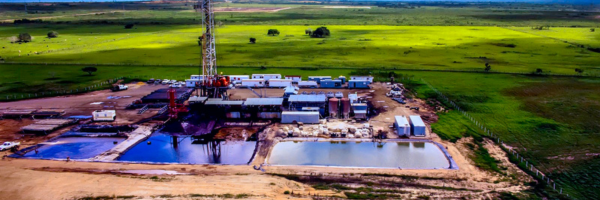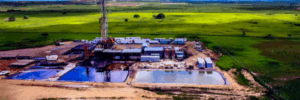LLDPE R (Reinforced Linear Low-Density Polyethylene) is a high-performance material used in demanding applications such as geomembranes, containment solutions, and aquaculture. Its durability and longevity stem from a precise formulation that includes key additives like antioxidants, UV stabilizers, and carbon black. These components work together to create a material that is resistant to environmental stressors, degradation, and long-term exposure to harsh conditions.
Step 1: The Base Polymer – LLDPE
The foundation of LLDPE R is Linear Low-Density Polyethylene (LLDPE), a flexible and high-strength polymer known for its elongation, chemical resistance, and puncture resistance. Unlike HDPE, which is stiffer, LLDPE remains pliable even in extreme conditions, making it ideal for geomembranes and liners.
Step 2: Incorporating Antioxidants for Long-Term Stability
During the manufacturing process, antioxidants are added to prevent polymer degradation caused by heat and oxygen exposure. These antioxidants play a crucial role in:
- Enhancing thermal stability during processing and installation.
- Preventing oxidation, which can weaken the material over time.
- Extending the service life of the membrane, particularly in applications where exposure to fluctuating temperatures is common.
Step 3: UV Stabilizers for Sunlight Protection
Exposure to ultraviolet (UV) radiation can break down polymers over time, causing brittleness and failure. To combat this, UV stabilizers are incorporated into LLDPE R to:
- Absorb and dissipate UV radiation, preventing degradation.
- Maintain flexibility and tensile strength, even with prolonged outdoor exposure.
- Increase lifespan, ensuring the material performs well for years in demanding environments.
Step 4: The Role of Carbon Black for Enhanced Performance
Carbon black is a critical additive in LLDPE R, providing color, durability, and additional UV resistance. When dispersed within the polymer, carbon black:
- Acts as a UV blocker, shielding the polymer from sun damage.
- Improves tensile strength and puncture resistance, making the material tougher.
- Minimizes chemical migration, making it ideal for applications like fish hatcheries and aquaculture, where water quality is paramount.
Step 5: Reinforcement and Factory Fabrication
What sets LLDPE R apart from standard LLDPE is its reinforced structure. A reinforcing scrim or fabric is embedded within the polymer layers to:
- Increase tear resistance and dimensional stability.
- Prevent elongation and deformation, ensuring a longer service life.
- Allow for factory-fabricated panels, reducing field seams and ensuring high-quality, climate-controlled welds.
Fabric reinforcement in reinforced Linear Low-Density Polyethylene (LLDPE) membranes significantly enhances dimensional stability, which is crucial for its performance in geomembrane applications. The reinforcement, typically a scrim fabric, provides structural integrity that mitigates the stretching, shrinkage, and thermal expansion issues inherent in pure LLDPE and woven propylene membranes. LLDPE itself has excellent flexibility and chemical resistance but can be prone to elongation under stress, which may cause deformation over time. The fabric reinforcement acts as a structural skeleton, reducing creep, minimizing differential expansion and contraction due to temperature fluctuations, and preventing excessive elongation under load. This stability ensures that the geomembrane maintains its intended shape and coverage area, reducing the risk of wrinkling, bridging, or pulling away from anchor trenches.
From an installation perspective, this dimensional stability is critical. During deployment, large geomembrane sheets must be precisely positioned, seamed, and anchored to prevent gaps or overlaps that could compromise containment. Reinforced membranes resist stretching and deformation, making handling easier and allowing for more consistent seaming. Additionally, they maintain uniform thickness and strength across the entire surface, reducing weak points and potential failure zones. This is particularly beneficial in applications requiring steep slope installations, where an unreinforced membrane may creep or pull away over time. Furthermore, reinforced geomembranes perform better under field conditions with high winds or mechanical stresses from heavy equipment, reducing installation complications and long-term maintenance risks. Ultimately, fabric reinforcement enhances the geomembrane’s performance and longevity, ensuring reliable containment in critical environmental and industrial applications.
E Squared using only the highest quality knit fabrics that have low shrink, high tenacity, and low wick yarns. Our specialized manufacturing process ensures that the finished textile has encapsulated edges. This combination of low wick yarns and encapsulated edges eliminates the need for edge seams on exposed edges, resulting in easier and faster installations.


